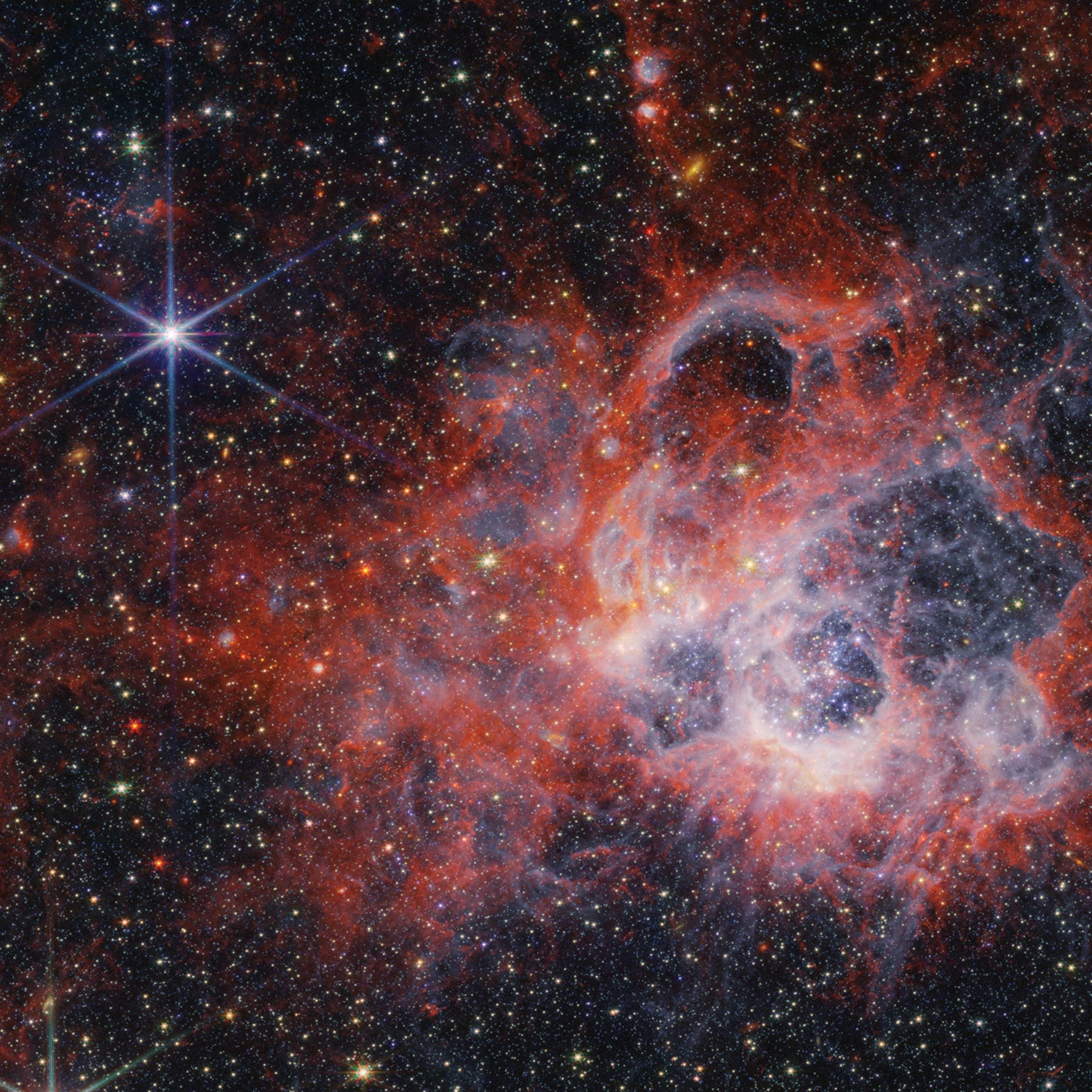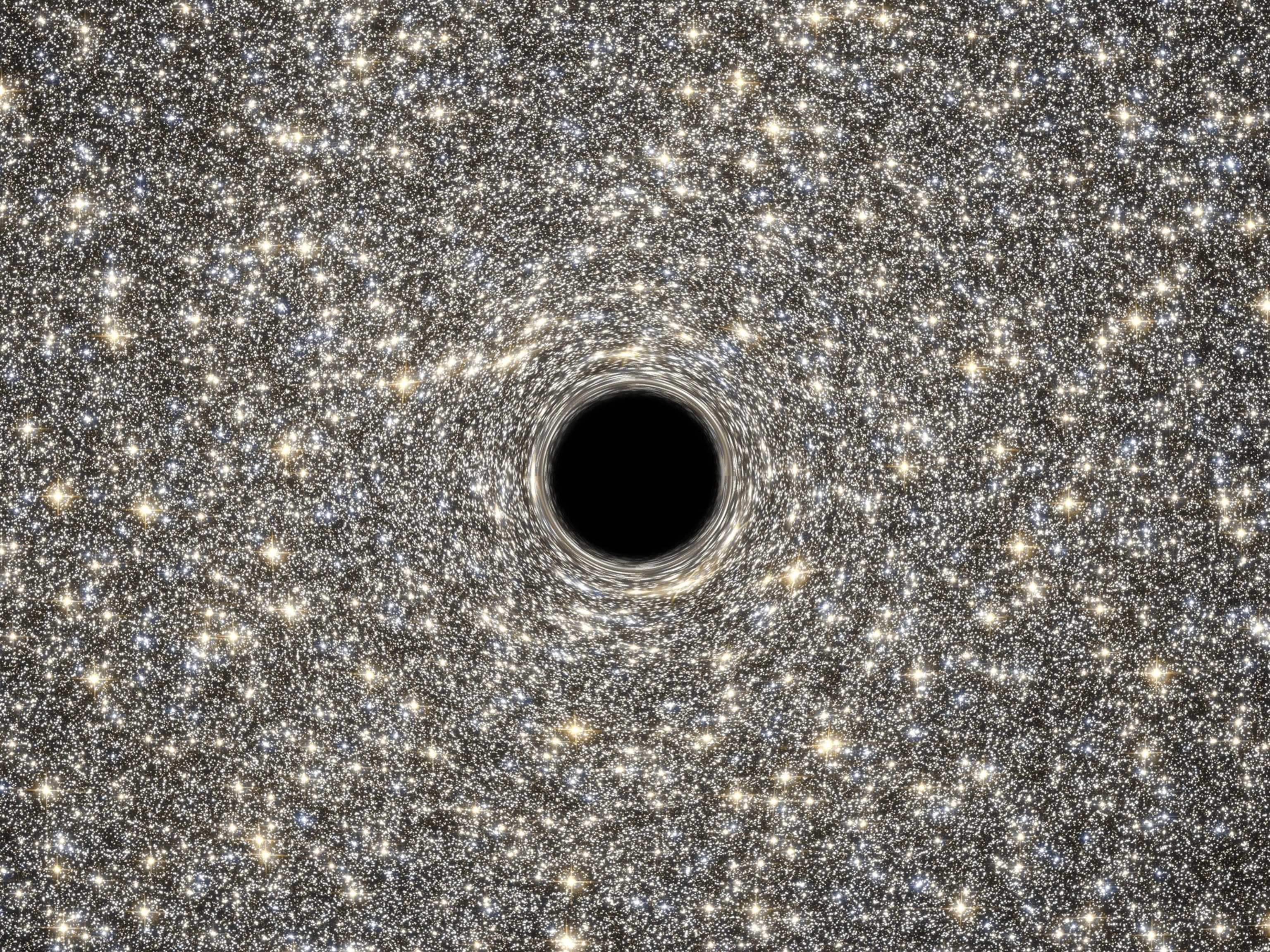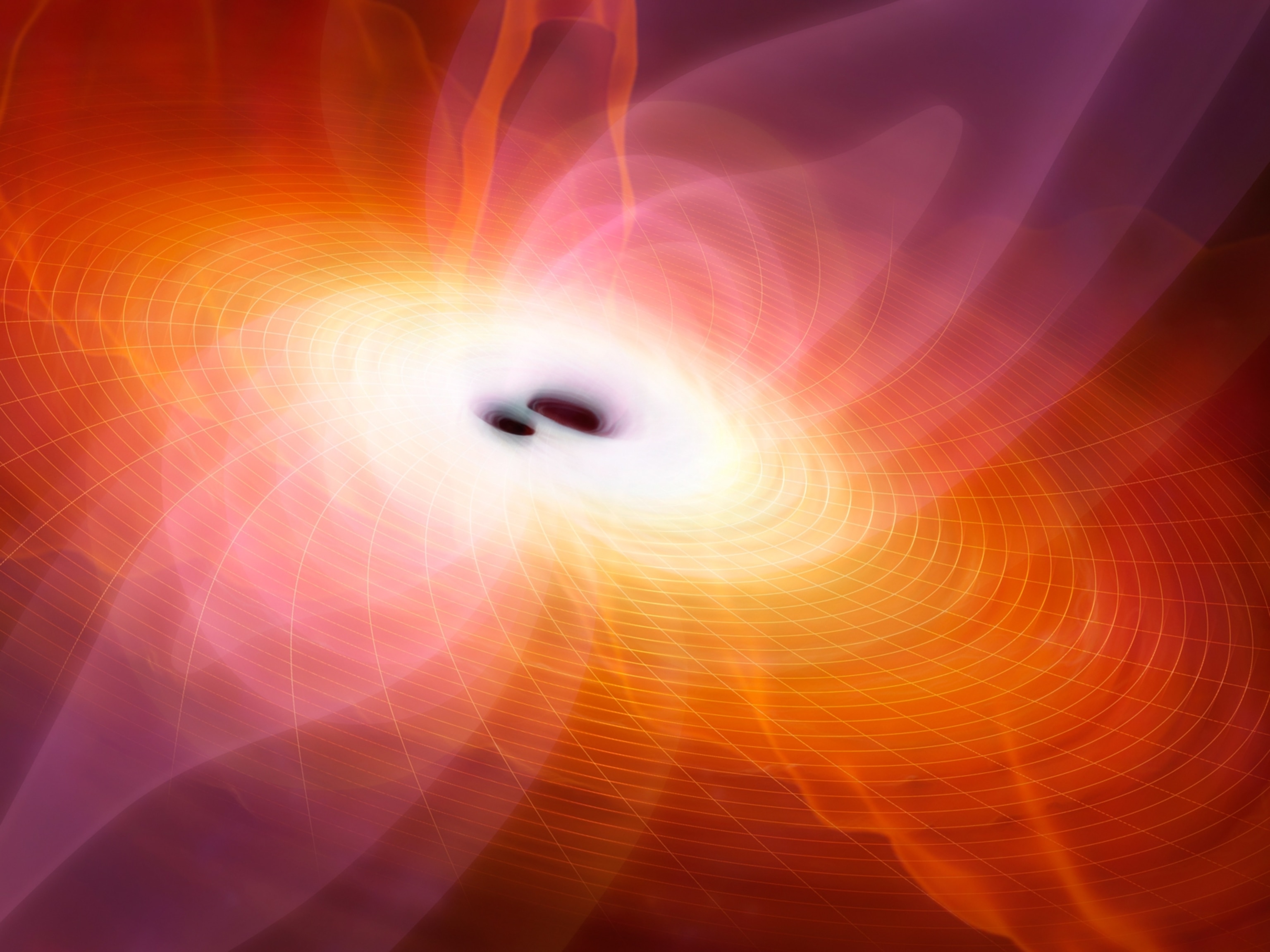
Dark matter warps galaxy clusters more than expected, shaking up cosmic theory
The leading model of how the universe is structured says the biggest clusters shouldn’t be as distorted as they appear through telescopes.
Like humans, galaxies can’t stand to be alone. Nudged by gravity, galaxies tend to group together, and some even end up in the universe’s equivalent of bustling megacities: clusters of up to a thousand galaxies, collectively outweighing our sun a million billion times over.
But for all the stars glimmering in these clusters, only a fraction of the entire structure’s mass is visible. As far as scientists can tell, a cluster’s real heft lies within a material that can’t be seen: an invisible, mysterious substance called dark matter. Like the concrete and asphalt beneath a city, a vast spherical halo of dark matter undergirds the whole cluster of galaxies. And just as buildings rise from the city streets, each individual galaxy is embedded within its own subhalo of dark matter.
For decades, astronomers have tried to understand how dark matter acts as the cosmos’ urban planner, shaping the structure of our universe. But the latest looks suggest that whatever dark matter is, it’s not behaving as researchers expected.
In a study published today in the journal Science, researchers examine how 11 gigantic clusters of galaxies bend the light passing through them, as seen from Earth. The study finds that these clusters harbor more than 10 times as many dense pockets of dark matter than predicted by supercomputer models.
“When you find [such] a gap, most often it reveals that there’s an element of the model that needs to be refined,” says study co-author Priyamvada Natarajan, a theoretical astrophysicist at Yale University. “But occasionally—very rarely in the history of science—the gap actually shows you the way to a new theory.”
A cosmic camera lens
The study is the latest to poke and prod at the leading model of the universe’s key ingredients and how they interact over time, known as Lambda Cold Dark Matter (Lambda-CDM).
According to this model, no more than 5 percent of the universe’s combined matter and energy is baryonic matter: the familiar mix of particles that makes up planets, stars, galaxies, organisms, and everything else we can see. The bulk of the universe, 68 percent or so, is made of dark energy—represented by the Greek letter lambda (Λ)—an enigmatic repulsive force that drives the accelerating expansion of the universe.
The remaining 27 percent of the universe is made of an invisible substance called dark matter. Per the model, dark matter has mass and can create gravitational fields, but it doesn’t react with itself, emit light, or readily interact with normal matter other than through gravity.
To put Lambda-CDM to the test, researchers led by Massimo Meneghetti, an astronomer at the Astronomical Observatory of Bologna in Italy, decided to look at some of the biggest known galaxy clusters. The team wanted to examine how mass is distributed within a cluster by measuring a phenomenon that appears in telescopes like a trippy camera effect.
Just as a bowling ball placed on a trampoline will warp and stretch the fabric, matter distorts the geometry of the space-time around it. Massive objects such as galaxies or galaxy clusters warp space-time so much that the distortions bend any light that passes through. Astronomers can see this effect, called gravitational lensing.
When an object is especially massive and dense, the gravitational lens it creates can even split light apart. From our vantage point, this anomaly looks like the object is encircled by multiple images of the same background light source.
Dark matter’s gravity adds to this effect, and galaxy clusters appear to be chock-full of the stuff. According to our best models, not only are galaxy clusters embedded in vast, spherical halos of dark matter but individual galaxies within a cluster also lie within their own dark matter “subhalos.”
When Meneghetti’s team mapped 11 galaxy clusters and counted up the smaller gravitational lenses, they found more than 10 times as many as they were expecting. This observation suggests the dark matter subhalos are far denser than computer simulations predicted—a finding that appears to contradict Lambda-CDM.
Tweaking the theory of the universe
This discrepancy isn’t the first to arise between observations of the universe and Lambda-CDM. However, the new finding is especially surprising because the mismatch is unlike any of the others found so far in tests of this model, says University of Texas at Austin astrophysicist Mike Boylan-Kolchin, who wasn’t involved with the study.
The structure of nearby galaxies implies that dark matter is less dense in these locations than theory predicts. This new anomaly, though, cuts the other way, requiring that galaxy clusters’ dark matter be even denser than Lambda-CDM suggests.
“We’re finding a problem that goes exactly in the opposite direction,” Meneghetti says.
What could be causing the new conflict between theory and observation? It’s possible that computer models aren’t perfectly capturing how galaxies form, or that they simply lack the resolution to model such immense structures—but the study’s authors say that they’ve accounted for these potential sources of error, and so far, it looks like the discrepancy is simply too big to be explained by them.
Part of the challenge is that any theoretical tweaks need to be just as good as Lambda-CDM at explaining the universe’s other properties.The theory holds that dark matter is “cold,” or that the particles moved around fairly slowly in the universe’s earliest days. That sluggishness was essential to preserving regions where dark matter was slightly more dense than average. These over-dense regions later collapsed under their own gravity, acting as a sort of scaffold for normal matter to cluster and form stars, planets, and galaxies.
While the model is great at explaining large-scale cosmic systems, its predictions don’t match up so well with structures that are less than about 3.3 million light-years across, the scale of large galaxies or groups of galaxies. Astronomers tend to see fewer small objects, or less dense regions within galaxies, than Lambda-CDM predicts—even as the new observations found denser regions than the theory anticipates.
Future models must explain this two-faced behavior of dark matter at small scales. “It’s like trying to walk through several different needles at the same time,” says James Bullock, an astrophysicist at the University of California-Irvine who wasn’t part of the study.
University of Durham physicist Mathilde Jauzac, an expert on gravitational lenses (who also wasn’t involved in the study), adds that testing the problem further will get complicated. For one, giant galaxy clusters aren’t that common. The new study included as many clusters as it could: 11.
Because giant galaxy clusters are rare, they don’t arise frequently in simulations, Jauzac adds. So to see more of them, modelers will have to simulate much bigger volumes of space, which will require serious number-crunching.
Once astrophysicists identify enough contradictions in Lambda-CDM, they may be able to find a path to a new theory that explains the entire history of the universe with even more precision: how the big bang sparked a series of cosmic interactions that led, step by step, star by star, to our home planet Earth—and, ultimately, to us.








